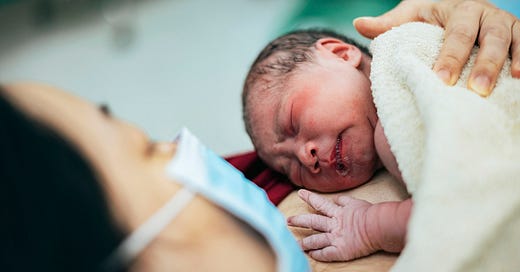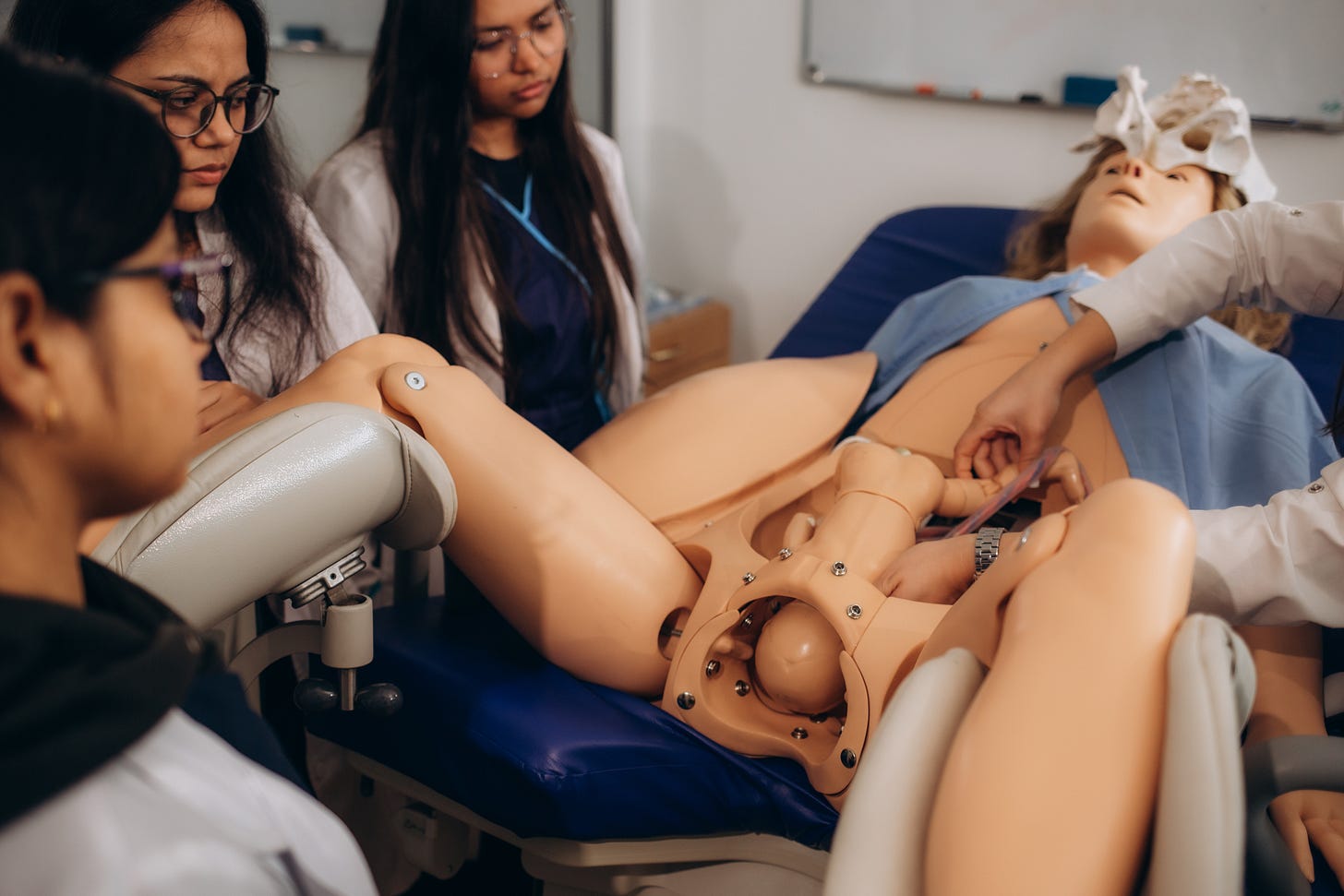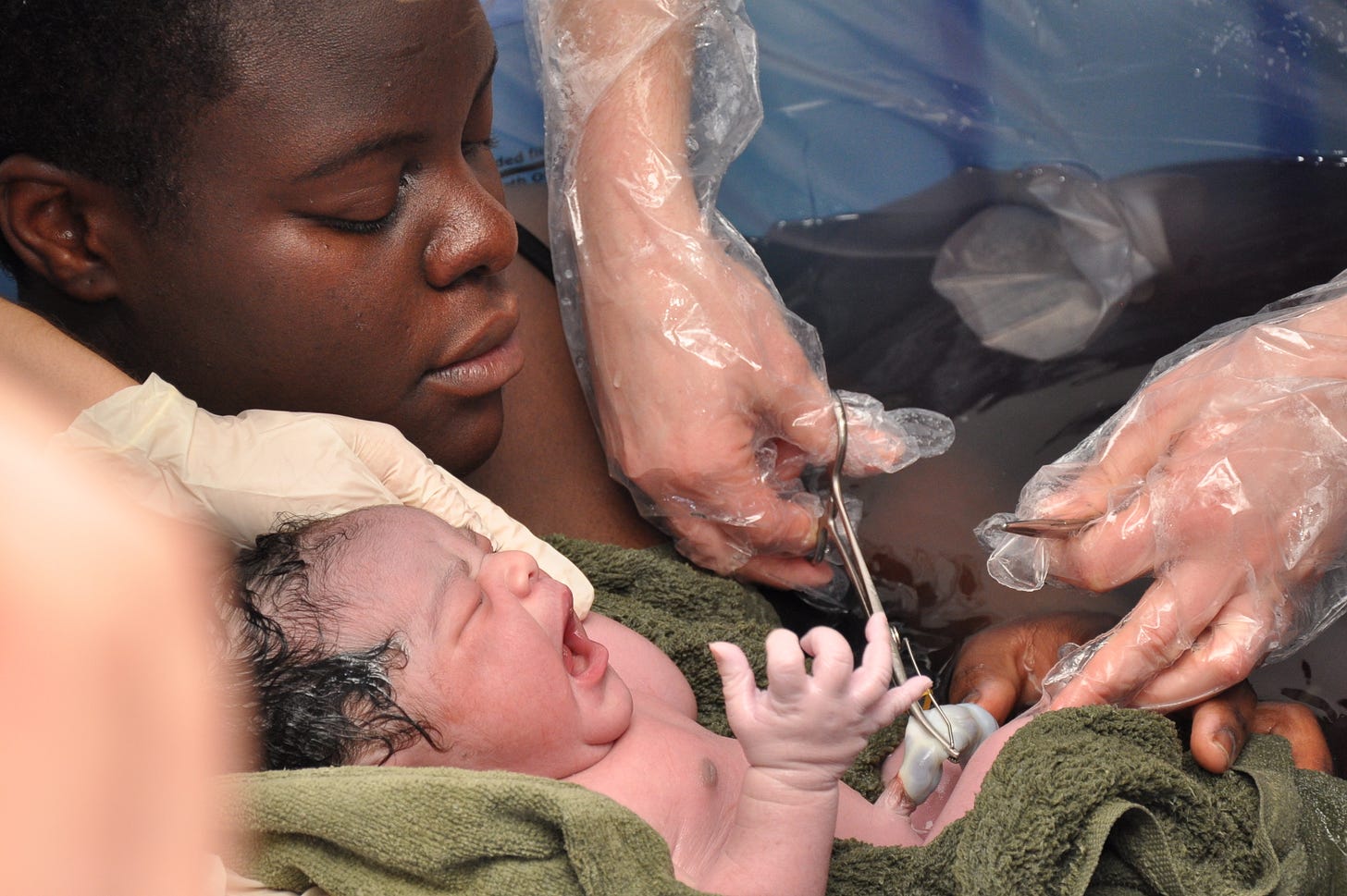Beyond Traditional Funding:
How Innovative Finance is Reshaping Community Birth
In the evolving landscape of maternal healthcare, a quiet revolution is taking place in how we finance community birth centers. The traditional model of relying solely on fee-for-service revenue and occasional grants has proven inadequate for sustaining these vital community institutions. However, innovative financing approaches are emerging that could transform how we support and scale community-based maternal care.
Understanding the Current Crisis
The financial challenges facing community birth centers reflect deeper systemic inequities in healthcare financing. With only 7% of birth centers owned by people of color, the stark reality of financial barriers becomes clear. These centers, often operating as non-profits in communities with the greatest need, face a perfect storm of challenges: delayed Medicaid reimbursements create cash flow problems, while global payments favor hospitals over community providers. The result is a system where those best positioned to improve maternal health outcomes struggle to maintain financial sustainability.
Learning from Innovative Models
One of the most promising models emerges from Trenton, New Jersey, where the AME Church is demonstrating how anchor institutions can leverage their assets for community health. The church's $7 million birthing center initiative represents more than just a new healthcare facility – it's a blueprint for how established community organizations can reimagine their role in community health.
The AME Church project combines multiple innovative elements: state appropriations, cannabis tax revenue redirection, and a sophisticated Community Development Corporation structure. What makes this model particularly powerful is its ability to leverage existing community assets for health equity. The church's position as a trusted community institution adds vital social capital to the financial resources it brings to bear.
Integrated Capital Approaches
The most successful birth centers are increasingly drawing on multiple funding streams through an integrated capital approach. Philanthropic support provides early-stage funding and capacity building, while community investment tools like Donor-Advised Funds offer flexible, patient capital. Faith-based institutions contribute both financial resources and physical assets, while public funding through Medicaid innovation models provides operational sustainability.
This integrated approach recognizes that different types of capital serve different purposes. Early-stage philanthropic funding builds organizational capacity and supports planning. Community investment provides patient capital for facilities and infrastructure. Public funding ensures operational sustainability. When these sources work together, they create a robust financial foundation that can support both growth and innovation.
Case Study: Birth Detroit - A New Model for Community-Owned Birth Centers
The journey of Birth Detroit co-founded by Leseliey Welch: A public health strategist and social entrepreneur who serves as the CEO, Elon Geffrard: The Perinatal Support and Education Director at Birth Detroit, Char'ly Snow: A midwife and the Chief Clinical Officer, and Nicole Marie White: A co-founder and the MI State of Birth Justice Director offers powerful insights into how community-owned birth centers can be developed through innovative approaches to both financing and community engagement. As the largest majority-Black city in the United States, Detroit faces significant maternal health challenges, with 11% of infants born to people who received either no prenatal care or late care, and stark racial disparities in infant mortality rates.
Birth Detroit emerged as a response to these challenges, developing a model that demonstrates how birth centers can be built through deep community engagement rather than traditional private ownership. Their approach centers on four core strategies - MIDWIFE, ADVOCATE, ENGAGE, and DEVELOP - each supported by dedicated community volunteer work groups.
What makes Birth Detroit's model particularly innovative is its comprehensive approach to community ownership and financing. Rather than relying on traditional models of birth center development, which often depend on personal wealth or conventional loans, Birth Detroit has created a community-informed framework that combines multiple funding streams with deep community engagement.
The organization began by conducting extensive community research, including stakeholder interviews with 17 Detroit maternal-child health leaders and a comprehensive community survey with 391 respondents. This foundation of community input shaped not just their services but their entire approach to financing and development. The survey revealed overwhelming support for midwifery care and birth centers, with 98% of respondents believing a birth center would benefit the Detroit community.
Birth Detroit's financing model demonstrates how birth centers can succeed through integrated capital approaches. Their development strategy includes:
- Building strong community partnerships before seeking capital
- Engaging multiple funding streams including philanthropy and community support
- Developing sustainable revenue models through policy advocacy
- Creating community volunteer structures that build capacity while reducing costs
The organization has achieved significant milestones, including exceeding their 2021 fundraising goals through their "Lead with Us" campaign and securing participation in the Institute for Medicaid Innovation's national midwifery learning collaborative. This participation positions them to help shape sustainable reimbursement models for community birth centers.
There is also a crucial effort to establish endowments for organizations to build a longer term sustainable financial foundation.
“Today the Children’s Foundation, in partnership with Bill and Lisa Ford, announce the selection of 11 youth-serving organizations for the Michigan Central Station Children’s Endowment Initiative. This philanthropic effort provides each organization with the opportunity to establish a $1.5 million permanent endowment at the Children’s Foundation, so they can continue to serve Detroit area children forever, ensuring their permanence — like Michigan Central itself.” (CITATION LINK)
Perhaps most importantly, Birth Detroit demonstrates how centering community voice and leadership can create stronger, more sustainable birth centers. Their model shows that community ownership isn't just about who holds the deed – it's about creating structures that ensure community needs and voices drive both service delivery and financial decisions.
Creating Sustainable Models
The key to successful birth center financing lies in creating structures that preserve community ownership while providing sustainable support. This means moving beyond traditional grants and loans to develop new financial tools that align with community needs and values. Revenue-based financing, community investment notes, and cooperative ownership structures all offer promising models.
Equally important is building the infrastructure that supports financial sustainability. This includes shared back-office systems, group purchasing arrangements, and collective data systems that can demonstrate value to payers and partners. When birth centers can effectively document their outcomes and demonstrate cost savings, they strengthen their position in negotiations with both public and private payers.
Supporting Workforce Development
Any discussion of birth center financing must address workforce development. The high cost of midwifery education (approximately $175,000) creates a significant barrier to entry, particularly for individuals from communities most in need of these services. Innovative financing models must therefore extend beyond facility funding to support workforce development through scholarship programs, loan forgiveness, and direct support for training programs.
Policy Support for Innovation
Financial innovation in birth center funding requires supportive policy frameworks. This includes reforms to Medicaid reimbursement systems, the development of value-based payment models, and the creation of enabling regulations for alternative ownership structures. Policymakers must recognize that supporting innovative financing models is crucial to achieving broader maternal health equity goals.
Looking Forward
The future of community birth depends on our ability to create financial models that truly serve communities. This means moving beyond traditional funding approaches to embrace innovative models that:
- Support community ownership and control
- Provide sustainable, long-term funding
- Enable growth and innovation
- Build community wealth
- Support comprehensive care models
A Call to Action
Creating sustainable funding for community birth centers requires coordinated action from multiple stakeholders. Philanthropic organizations must commit to long-term, flexible support that enables innovation. Financial institutions must develop new tools that align with community needs. Community organizations must build collective power and shared resources. Policymakers must create enabling frameworks for financial innovation.
The transformation of community birth financing is not just about finding money – it's about reimagining how financial systems can support health equity and community well-being. By learning from innovative approaches and building new systems, we can create sustainable funding structures that support equitable, high-quality maternal care for all communities.
The models exist. The tools are emerging. Leaders like Orchid Capital and Birth Center Equity are modeling the new ways of working that we have to embrace to change the financial systems that support reproductive healthcare. The time has come to transform how we finance community birth, creating systems that serve communities rather than extract from them. Through thoughtful innovation and committed partnership, we can build financial structures that support the growth and sustainability of community birth centers, ensuring that every community has access to the maternal care it deserves.






